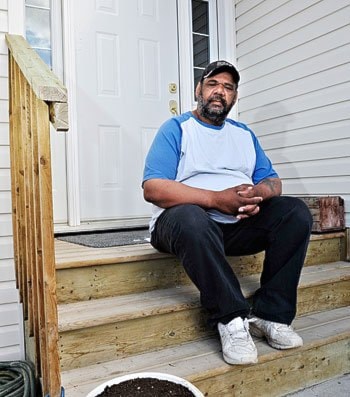Great River Journey wants a government bailout.
The fledgling tour company, which hopes to persuade rich boomers to part with $6,500 for a week-long tour down the Yukon River, finds itself teetering towards bankruptcy.
The company needs a cash infusion of $1.2 million to get through 2010, said president George Asquith. He hopes the territorial and federal governments will each pony up $400,000, with the remainder coming from the company’s First Nation and private owners.
And he needs money soon. Now’s the peak period to run advertisements to woo potential customers.
Asquith fears the company may close if it doesn’t receive money by month’s end.
Great River Journey finds itself short of cash after a disappointing past summer, during its first full operating season. It counted on selling 300 seats. It sold 100 instead.
This lacklustre performance was an unavoidable consequence of the global economic downturn, said Asquith.
Of course, when most companies run short of money they can’t count on government to ride to the rescue, unless they’re a General Motors or an Air Canada—firms deemed to be “too big to fail.”
It’s hard to see Great River Journey, a company that employed a peak of 35 workers last summer, fitting this description.
About $12 million has been invested in the company to date.
Of that, about $5 million comes from private investors and $4 million in grants and loans from government, including $500,000 in grants from the territory.
The Kwanlin Dun, Ta’an Kwach’an, Tr’ondek Hwech’in and Selkirk First Nations each pitched in $250,000 of their own money. This First Nation involvement helped leverage an additional $1.5 million from Ottawa.
To pull the plug on the project now would be a big waste, said Asquith. Only a fraction of the invested money would be recoverable, he said.
But the company won’t receive any more money from Yukon’s Department of Economic Development, which has already doled out $630,000 to Great River Journey since 2007. Departmental guidelines forbid it from giving more money, said assistant deputy minister Terry Hayden. He suggested they talk to an investment bank.
But private money has not been easy to find, said Asquith. So he’s taking his case to the Yukon cabinet.
He sent a letter on February 8 that warns, “Failure will have tragic and unnecessary consequences.” He hasn’t received a response.
As Asquith tells it, he’s the one doing government a favour. His business would attract a demographic largely missed by Yukon’s tourism industry: affluent boomers with no interest in paddling a canoe or lifting a backpack, but who are willing to drop big dollars for a chance to commune in comfort with the northern wilderness.
“It’s something the Yukon needs to do,” said Asquith. “This is the time for the local government to step up and support an important icon project.
“The territorial government needs to be the leader. Everyone else will follow.”
But Premier Dennis Fentie and his cabinet are bound to wonder why, if this company is such a sure bet, it cannot raise the money privately.
They may also wonder when they became partners in the venture, as Asquith identifies government as among his company’s “principals,” in his letter.
One impediment to Great River Journey drawing private investment is its significant debt load. It’s also asking for government help in shedding it.
It wants Ottawa to forgive a $712,000 loan and the Business Development Bank of Canada to write down much of a $2.8 million loan.
Further debt would be shed by converting investor’s loans into shares. But First Nation investors have so far balked at this plan, because the addition of new investors could lead to “massive dilution for existing shareholders,” states the company’s 2010 business plan.
But if First Nations fear being soaked, and believe the company can succeed in the long-term, why don’t they contribute the needed cash themselves?
That, said Asquith, is a question for First Nations. And Steve Taylor, who leads the consortium of First Nation investors, could not be reached before press-time.
Asquith is a lawyer by trade who dove into the tourism business to help a friend launch a successful submarine tour company in the Cayman Islands. He grew up in Toronto, but is a long-time Whitehorse resident.
For about $1,000 per day, guests spend five to seven days being ferried down the river from Whitehorse to Dawson City in small motorboats that are enclosed with Plexiglas to ward off wind and rain.
After being regaled with goldrush lore and First Nation history, guests nosh on fine local foods such as caribou steaks, then retire to plush cabins replete with flush toilets and claw-foot bathtubs.
The business cannot be simply mothballed, said Asquith. It spent the past year ferrying around 50 travel writers and travel agents, working up praise in magazines such as Forbes and National Geographic. But shuttering for a year could be fatal, for agencies would worry about the business’s reliability.
“It’s not the time to blink,” he said.
Contact John Thompson at
johnt@yukon-news.com.
